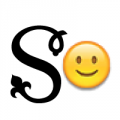w_r ligature in script font

Grzegorz Luk (gluk)
Posts: 168
I have doubts about "w_r" ligature in my script font. On image below example in word "wrong".
It's readable or reminds too much "ur"?

Tagged:
0
Comments
-
Looks legible to me... but try setting it (and /u/r/) in a few nonsense words to see whether it's just intuition from context.
0 -
0
-
The nonsense word is difficult, but everything else is easy to read. aurewrty?0
-
0
-
Admittedly, I had a bit of trouble reading aurewrty at first sight. I'm not sure whether the unexpected serifs in /n/ and /u/ might interfere as well.Didn't have the patience to wait for the animated sample. The Polish is certainly more difficult for me than it would be for a Polish person.0
-
I don’t think the problem is in the ligature itself but, the construction of the diagonal characters, altogether. They are quite homogeneous with the rounding at the bottom, which is fine, but not very distinguishable considering the similarity of the top halfs of the /u /w and y. (What does the the /v look like?)
The top horizontal of the /z and looping of other characters are interesting, as are the serifing of the /c and /s. Should the /u more closely the /n? Thus, I am wondering how maybe some of those features could be applied to your diagonal characters which will help it read clearer in those tough ligature situations. Try test strings of uuvuu vvuvv uuwuu wwuww wwvww vvwvv and see how quickly you, or someone else, can spot the outlying character. If you can’t, try a different construction.
Designing a thin, mono-linear, script face to be legible is a nice challenge. Good luck!0 -
I also have to admitted that it's really hard to read. Keep going your test.0
-
@Joe Elwell @André Simard @Christian Thalmann Thank YouJoe Elwell said:... Try test strings of uuvuu vvuvv uuwuu wwuww wwvww vvwvv ...unfortunately in examples above glyph /w occurred only as contexual alternate. Base glyphs /w /v look like bellow

0 -
I think you need to work on the /u first. (Which may mean you need to go back to work on the non-contextual /n, as well — It looks too wide at the end of the word can) That seems to be the weak point in these strings. Use the nnunn oouoo strings to test rhythm and texture. I like the balance of the v-w strings and think those should serve as a reference point for the sort of rhythm you want to achieve across the board.0
-
/n at the end of the word "can" is is contextual alternate (end form, like last /t in "that" ), and is intentionally wider as standard /nJoe Elwell said: ...It looks too wide at the end of the word can) That seems to be the weak point in these strings. Use the nnunn oouoo strings to test rhythm and texture.
0 -
In that case the contextual (final form) /n is too wide. You can treat the exit stroke with more of a swash ending if you like but, the counter shouldn’t be wider.0
-
My brain can’t get over the added horizontal serifs that break the connecting-stroke rhythm. /w is fine as the first letter in a word, but not when it is in the middle of the word. Same for /n.
Do I just need to get over it, and used to the idea that it is a hybrid of a printed font and a handwriting style font?1 -
Either add weight to some parts of the letters or look how it's done in Bukhari by Microjihad Inc. and Nickainley by Seniours Studio (both of which I did the Cyrillics for). There is also my Bronn Rust, somewhat less developed on my part.0
-
@Thomas Phinney hybrid is most probably best description for this. None of the glyhps was handwritten, but geometrically constructed. My Idea was geometrical, good readable typeface with handwriting feel... horizontal serifs are consequence of "readability"
 @Vasil Stanev thank You, but this font stay thin & mono-linear@Joe Elwell the longer I look at "can", I think You are right. Terminal /n is too wide. Most probably I make terminal /n only a bit wider as standard /n.
@Vasil Stanev thank You, but this font stay thin & mono-linear@Joe Elwell the longer I look at "can", I think You are right. Terminal /n is too wide. Most probably I make terminal /n only a bit wider as standard /n.
0 -
I think you've got a ductus problem, in that you are merging the final stroke of the w and the initial stroke of the r into a single element, so the result is readable as ur or wı.2
-
Poles don't know this form of /r from school, so it is not surprising that we take the loop for just an instroke. In reality it is integral to the letter, Romanians might even write /r like this:
 Personally I even think this calls for locl, as this form is totally alien for Polish use. (Unless you're going for foreign, or chic, vibe).0
Personally I even think this calls for locl, as this form is totally alien for Polish use. (Unless you're going for foreign, or chic, vibe).0 -

On the other hand, merging /r with /z is (I think) fine for Polish. Not sure about other languages.
0 -
I think below is sort of what @John Hudson’s point is about the w_r ductus... the loop belongs to the w as a natural transition to the next character. (This is an italic style I just started transitioning into a modern script-face)

And I completely agree with @Thomas Phinney about losing the serif on the straight stems. It isn’t natural within handwriting — I think you are mistaking readability for legibility in this case; and geometrical as a hand-written script style is an interesting concept. Perhaps focus on what is most important for this design to evoke and incorporate the other aspect where it make sense / works best.
Below is quick scrawl of how your /n (sans serif) and your loop from the /z & r could inform others like the /v and /w and other, as well.
If anyone thinks I am wrong, please say, I won’t be offended.1 -
Just noticed that the dotless i in my last post isn't displaying. I meant that the wr combination in the original post can be read as ur or wi (without the dot on the i), because of the way the stroke patterns of the two letters are merged.0
-
Yes, can we get a better version of Alright Sans? :'( This one has empty glyphs for dotless i, pi, and probably a whole lot of other glyphs, plus it has no Vietnamese, no Greek and Cyrillic, not to mention Armenian. (Maybe there's another typeface that would suit TD better? For example... a system font?)
6 -

2 -
That’s a lovely saying, but it seems self-contradictory.
1) Anything goes IF it does (a) and (b).
2) Nothing is considered “wrong.”0 -
looking at it now I can see it needs another th lig, an re and another g.end.0
-
Some more test words: awry awrah chowry cowrie dowry ewre heathwren inwrite Jewry Lawrie Lowrie miswrite wranny wrasse.You asked whether it's readable: it is. I don't think most readers will care, but... there's something intrinsically wrong about it, kind of as though you'd start writing Cyrillic ell or em connected directly to the preceding letter, without making the little upstroke/loop:
 (And you get an i instead of em.)If you want to go through with this, it would be best justified if it fixed a problem. I'd love it then if you showed us the problem!
(And you get an i instead of em.)If you want to go through with this, it would be best justified if it fixed a problem. I'd love it then if you showed us the problem!
1 -
Regarding legibility, you might consider tapering the outstrokes a bit (or a bit more) while leaving the main letterform monolineal. This might eradicate the need for the serifs.(Unless this is strictly a skeletal font; what are you animating it with?)0
-
Maybe I should have said ‘when’, not ‘if’.Thomas Phinney said:That’s a lovely saying, but it seems self-contradictory.
1) Anything goes IF it does (a) and (b).
2) Nothing is considered “wrong.”0 -
Adam Jagosz said:... there's something intrinsically wrong about it...most probably there are more things in this font, e.g. ligatures S_h, T_i - who writes like that...

I create this font for SVG animations (with on-line images generator), that mean it stay thin & mono-linear. But legibility (thx @Joe ElwellAdam Jagosz said:... you might consider tapering the outstrokes a bit (or a bit more)... ) is important.@Nick Cooke: I like Your Idea, btw. script font (Goskar ?) too.
) is important.@Nick Cooke: I like Your Idea, btw. script font (Goskar ?) too.
0 -
Grzegorz, your latest wr sample looks like wi (with idotless). You need a smallish end loop on the w and a bigger initial loop on the r. Thanks, yes it is Goskar which is progressing not exactly speedily, but it’s getting there. This is the lightest of 4 weights.0
-
@Nick Cooke yes, mistake with w_dotlessi is possible. thank you,(@John Hudson too)First try of new w_r ligature:
 3
3 -
It’s better, but looks disconnected. Move the loop away from the w, closer to the r.1
Categories
- All Categories
- 46 Introductions
- 3.9K Typeface Design
- 487 Type Design Critiques
- 563 Type Design Software
- 1.1K Type Design Technique & Theory
- 655 Type Business
- 860 Font Technology
- 29 Punchcutting
- 520 Typography
- 119 Type Education
- 324 Type History
- 77 Type Resources
- 112 Lettering and Calligraphy
- 33 Lettering Critiques
- 79 Lettering Technique & Theory
- 558 Announcements
- 94 Events
- 114 Job Postings
- 170 Type Releases
- 179 Miscellaneous News
- 276 About TypeDrawers
- 54 TypeDrawers Announcements
- 120 Suggestions and Bug Reports










